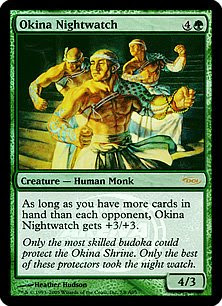 Occasionally I have random questions about the rules. I could post my questions to a forum but I have you, my faithful legion of readers, to answer my questions. And by the way, I hate optional abilities that begin with “you may”, because it requires additional programming.
Occasionally I have random questions about the rules. I could post my questions to a forum but I have you, my faithful legion of readers, to answer my questions. And by the way, I hate optional abilities that begin with “you may”, because it requires additional programming.1. Reya Dawnbringer – has a triggered ability that says, “At the beginning of your upkeep you may return target creature card from your graveyard to play.” Since this ability is optional, when do you decide if you want to or not? Do you decide at the beginning of your upkeep whether or not to use Reya’s ability?
2. Angel's Feather says “Whenever a player plays a white spell, you may gain 1 life.” When do you decide if you want to use this ability or not? Do you have only one window of opportunity to use this ability once a spell is on the stack?
3. Ok this isn’t strictly a rules question, but what is Heart of Light (10th Edition) good for? Heart of Light is a creature enchantment that says, “Prevent all damage that would be dealt to and dealt by enchanted creature.” You can target one of your creatures to make him an all-star blocker and I guess you can target one your opponent’s creatures that you couldn’t handle. Is this card a variation of Pacifism? This card just confuses me.
4. What happens when Orcish Artillery’s ability goes on the stack and then your opponent steals Orcish Artillery. Do you or your opponent receive 3 damage? (In case you don’t know, Orcish Artillery’s ability says, “tap: Deal 2 damage to target creature or player and 3 damage to you.”)















